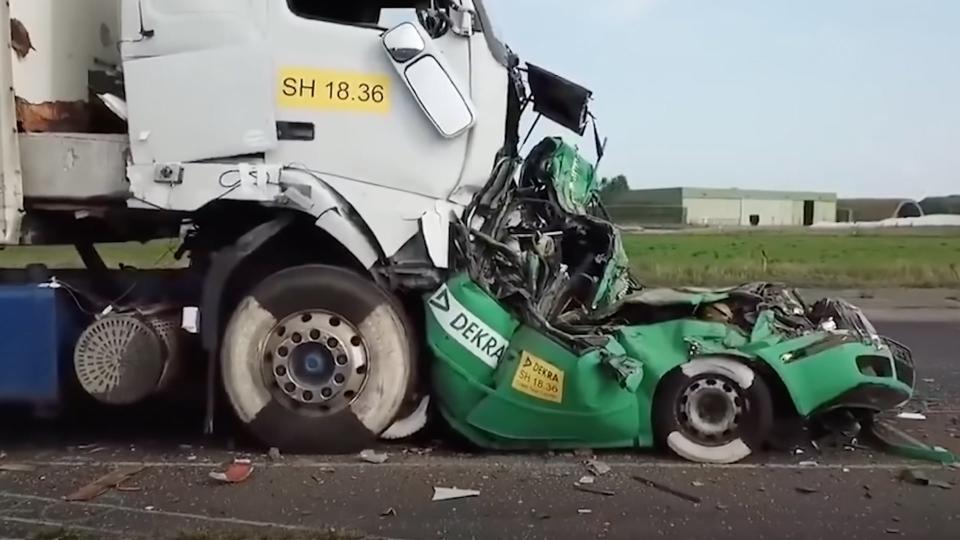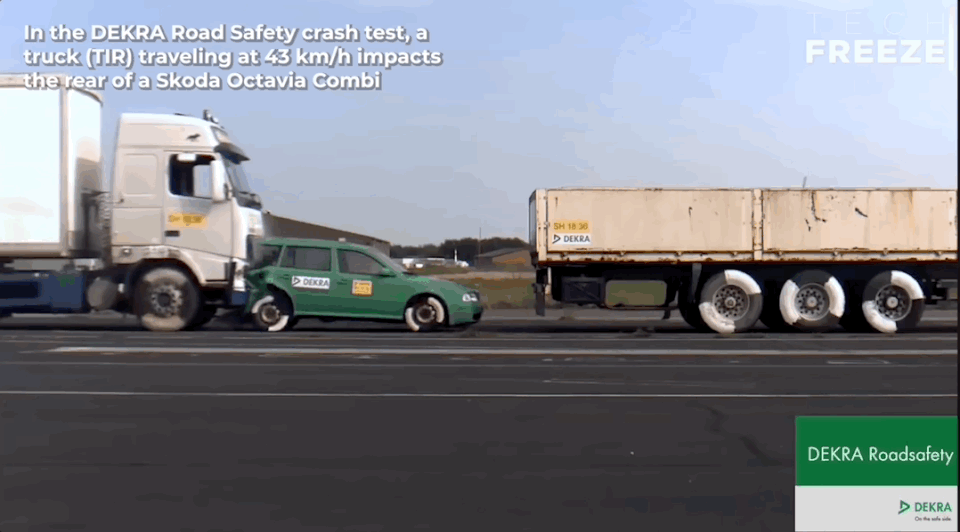Pushing Cars Down Hills, Throwing Them off Cliffs: How Crazy Crash Tests Impact Modern Vehicle Safety

When thinking about crash tests (like I know you were just doing, amirite?), visions of two dummies traveling down a straight path might come to mind. But that's silly because no two crashes are alike, and they will definitely not always be straight-line head-on collisions.

Check out this crash test compilation video to see what I mean. It's a fascinating look at multiple scenarios involving multiple vehicle types. From passenger cars to box trucks, this YouTube find showcases how far vehicular safety has come in terms of ADAS and also how people inside are protected if a collision can't be avoided. Some of the tests are extreme but, sadly, not unheard of, such as barreling downhill at 200 km/h or dropping vehicles from a cliff.
https://www.youtube.com/watch?v=EG4H_0maBhg
Thankfully, the modern car's focus is to absorb an impact. Airbags and crumple zones are about protecting the lives inside. This is why a vehicle can appear mangled and decimated, but its passenger cavity is in one piece. From F1 to Fremont, people have walked away from harrowing vehicle crashes, explosions, and crushes. Older cars, on the other hand, might exhibit a surface scratch, but the passengers could be suffering from internal bleeding.
Those of a certain age may recall NHTSA's infamous dummies, Vince and Larry. The safety duo has since retired and NHTSA's new safety team is now a family. The federal agency tests a battery of crash scenarios: frontal, rear, side, and rollover. On the other end of the spectrum is the IIHS. The non-profit tests similar collision angles but also considers headlight visibility and evaluates vehicle child restraints or LATCH system. Both groups, however, only test passenger vehicles. They also focus on likely real-world crashes and not cliff dives. What about everything else on the road?
In the U.S., the Federal Motor Carrier Safety Administration (FMCSA) handles regulations for large trucks and buses. As for those ambulance crash tests shown at the beginning of the video? Well, after tumbling down a rabbit hole of government websites, I learned that the crashworthiness of ambulances is left up to each individual state. Hit the brakes, what? Indeed.
But it's not the Wild West exactly. The SAE created an ambulance crash safety methodology, which it provided to the CDC (it was a deep rabbit hole). Unnervingly, the list of test methods is still more of a guide and a recommendation for the builders and manufacturers. We've written about our experience operating an ambulance (it's not easy) and other drivers' unwillingness to yield to one, even with lights and sirens on. We can learn a lot from a dummy. We start by not being one.

 Yahoo Autos
Yahoo Autos 